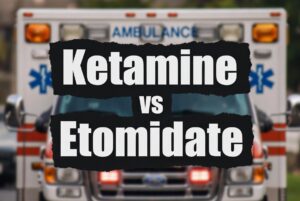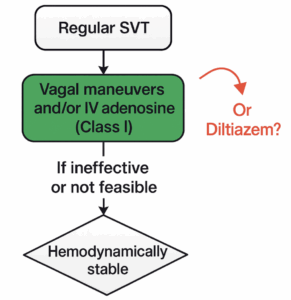Article Bites Summary by Clare Wallner MD
Infographic by Jeffrey Stirling MSc(c), PCP, @jeffrey_stirlin
Article: Sacramento County Prehospital Research Consortium. Out-of-hospital triage of older adults with head injury: a retrospective study of the effect of adding “anticoagulation or antiplatelet medication use” as a criterion. Ann Emerg Med 2017 Aug;70(2):127-38.
Background and objectives: The CDC Field trauma triage guidelines exist to help with appropriate hospital destination decision making, directing those who need it most to a designated Trauma center. It is known that older adults tend to be undertriaged despite a higher risk of clinically significant injury. Anticoagulant and antiplatelet use increase this risk and “Step 4” of the trauma triage guidelines, special considerations, incorporated language focused on elder adults as well as head injury of any patient using these medications in 2011. This study examines the sensitivity and specificity for intracranial hemorrhage on initial CT as well as death or neurosurgical intervention for patients meeting steps 1-3 of the guidelines with and without meeting the special considerations within step 4.
Methods: This was a retrospective chart review of a period of 12 months of 2012, including all EMS agencies that utilize the Sacramento County Trauma Triage Tool within the Sacramento County area. All patients 55 years and older, with isolated head injury, and transported to hospital were included. Those that were interfacility transfers, penetrating head trauma, prisoners, or had no matching hospital data available were excluded. Patients were identified by review of EMS billing data and ICD9 codes. Data from EMS patient care records was reviewed and matched to Emergency Department and Hospital records. Isolated head injury was determined by those patients with abbreviated injury score of less than 3 in body areas other than the head, per review of hospital records. Descriptive statistics were used to characterize the study population. Test characteristics were evaluated for four criteria groups, based on the triage tool: 1) Steps 1-3, 2) Steps 1-3+ anticoagulant or antiplatelet use, 3) actual transport, and 4) actual transport + anticoagulant or antiplatelet use.
Key Results: 2110 patients were included. Median age was 73 and 28% had pre-injury anticoagulant or antiplatelet use. The most common mechanism was fall from standing or lower (68%) and most had GCS 15 (80%). Of these patients, 6.5% (131/2110) were diagnosed with intracranial hemorrhage and 1.9% (31/2110) had death or neurosurgical intervention. Of the 2110 patients, 162 met steps 1-3 of the field triage criteria, 566 did not meet steps 1-3 but had anticoagulant or antiplatelet use, with 1382 patients remaining. Of the patients that did not meet steps 1-3, those with anticoagulant or antiplatelet use had a higher rate of intracranial hemorrhage compared to those who did not (9.2% CI 6.9-11% vs 3.8% CI 2.9-5%). Of the 52 patients who were diagnosed with traumatic intracranial hemorrhage, 69% were on aspirin, 25% on warfarin, 19% were on clopidogrel and 13% were on more than one antiplatelet or anticoagulant medication.

Take Home: Only a small percentage (8%) of older adults with isolated head injury met steps 1 to 3 of the field triage criteria. Of those remaining, a third were on anticoagulant or antiplatelet medications. Among this older population, the sensitivity of steps 1-3 of the field triage criteria only is quite low. Including anticoagulant or antiplatelet use in addition to those criteria increased the sensitivity for intracranial hemorrhage and death or neurosurgical intervention and remains an important consideration is determining transport destination.



